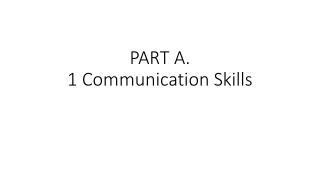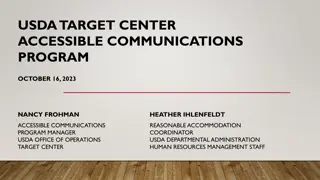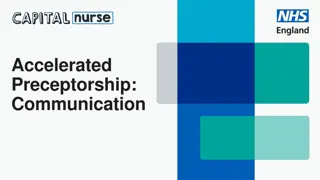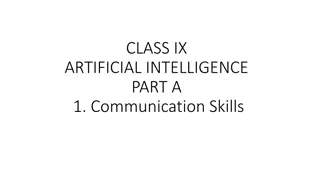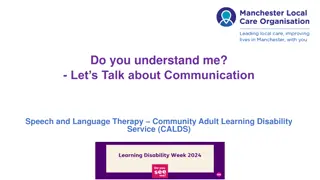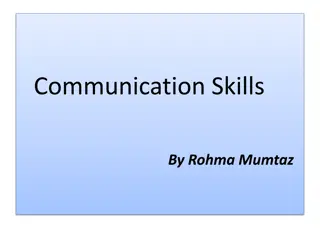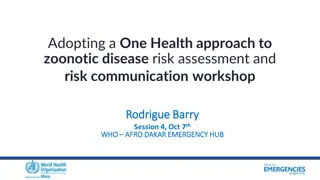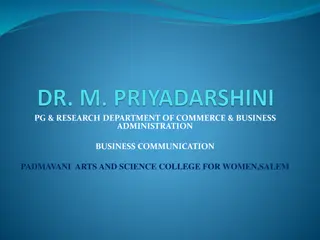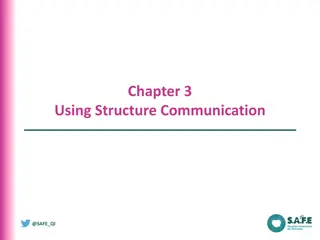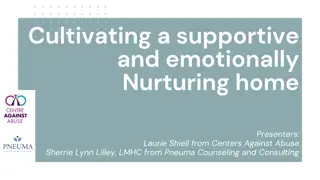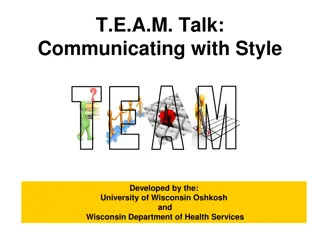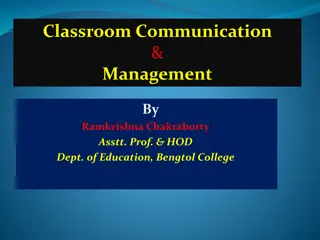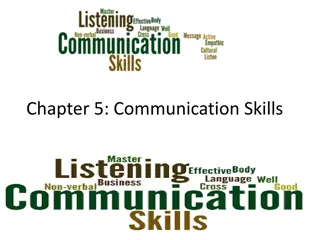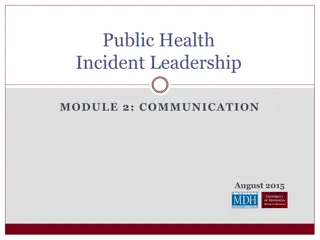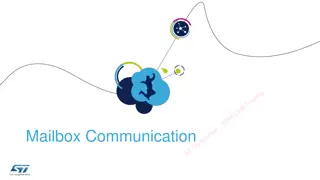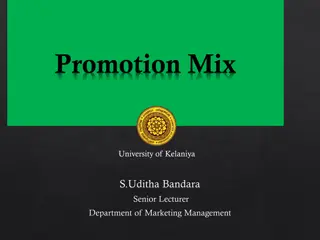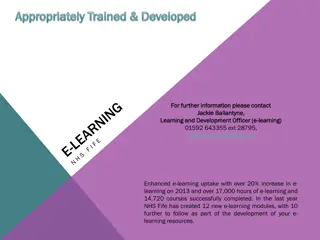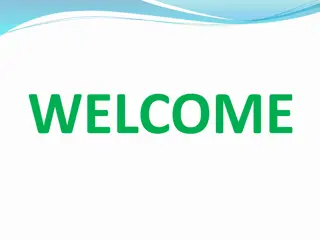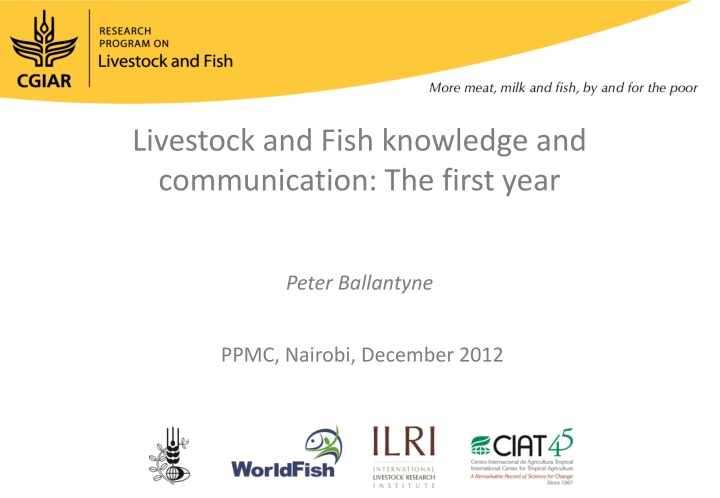
Livestock and Fish Knowledge Communication Strategies
Explore the principles and ambitions of livestock and fish knowledge communication, emphasizing open collaboration, multiple communication channels, and the importance of partnerships. Discover the results, tools, and numbers reflecting the initiative's impact, focusing on enhancing communication and sharing knowledge within the community. Learn about the concept of "working out loud" and its role in fostering learning and innovation in the field.
Download Presentation

Please find below an Image/Link to download the presentation.
The content on the website is provided AS IS for your information and personal use only. It may not be sold, licensed, or shared on other websites without obtaining consent from the author. If you encounter any issues during the download, it is possible that the publisher has removed the file from their server.
You are allowed to download the files provided on this website for personal or commercial use, subject to the condition that they are used lawfully. All files are the property of their respective owners.
The content on the website is provided AS IS for your information and personal use only. It may not be sold, licensed, or shared on other websites without obtaining consent from the author.
E N D
Presentation Transcript
Livestock and Fish knowledge and communication: The first year Peter Ballantyne PPMC, Nairobi, December 2012
Principles The knowledge we generate will be open and public We value the knowledge of our clients and partners We publish and communicate using multiple formats for multiple purposes We support knowledge collecting, connecting and conversing Face to face communication is as important as other more explicit communication channels Advocacy is everyone s responsibility Communication inextricably linked to outcomes Internal communication is part of our communication strategy Partnerships are the key to impact We will innovate in the ways we share knowledge and use ICTs.
Ambitions local VN IN TZ UG ET ML EG NI Connecting and powering value chain development Facilitate processes, engagement Translate outputs for uptake Communicating for wider influence and impact Internal communication Knowledge sharing and learning across the program internal external Organize & disseminate products Enabling technology development Deal with data Gender VCD Target Health Genetics Feeds global
Results Tools set up and Workflows initiated Repository: http://cgspace.cgiar.org/handle/10568/3112 Web site: http://livestockfish.cgiar.org Workspace: http://livestock-fish.wikispaces.com Calendar: http://livestock-fish.wikispaces.com/calendar Communication space on Yammer Facilitating and documenting/communicating component planning activities (http://livestock-fish.wikispaces.com/events) Workshop with WLE CRP on building blocks to organize knowledge and information for CRPs Initial communication templates and materials ILRI and WF comms collaboration started re-orienting from center towards program
Numbers Up 300% web views web posts alert subscribers products (program and projects) wiki members wiki views wiki edits meetings reported yammer posts yammer members 17,000 1,139 11,000 66 176 125 76 Weekly! Evidence of Sharing? Facilitation & reporting 34 75 50 Exchanging!
Working out loud! bringing activities out of closed repositories and applications [and events and processes], and pulling them into the open increases the likelihood of learning . . . - Stowe Boyd: http://blog.podio.com/2011/08/01/worki ng-out-loud-make-work-open-to-make-it- better
Opportunities Walk the talk Use the tools, work out loud! Data! Let s get started. Country VCD document the approaches, the choices and the results (partners? multimedia, engagement) Innovate with ICTs Attribute (claim) legacy project results? Comms budget? Comms skills?
CGIAR Research Program on Livestock and Fish livestockfish.cgiar.org livestockfish.cgiar.org CGIAR is a global partnership that unites organizations engaged in research for a food secure future. The CGIAR Research Program on Livestock and Fish aims to increase the productivity of small-scale livestock and fish systems in sustainable ways, making meat, milk and fish more available and affordable across the developing world.
5 Areas of Intervention Comms tools, methodologies and approaches reinforce efforts of key actors within the 9 target value chains to identify and address innovation needs and to access and use appropriate technologies, institutional strategies and knowledge. Comms 4 VCD The results/evidence of technology development activities are published as international public goods and adapted/transformed as required for optimal re-use by VCD partners Comms for Tech Dev Partners in the Program are supported by and using a range of tailored communication and knowledge sharing tools, methodologies and approaches to deliver effective learning and communication within and across the Program Program comms and learning Targeted stakeholders beyond the Program are aware of its focus, emerging results and insights, and they are encouraged and influenced by the evidence presented to take up, as necessary adapt and put the Program s results into use. Comms 4 wider impact Data collected and produced by the Program components is properly documented, archived and published to maximize its wide accessibility and re-use by others Data
Scope of activities Communicate for wider influence and impact Reach and engage with and influence wide audiences Research for impact Translate outputs into potential research, development and policy outcomes, get knowledge into use Knowledge sharing and learning Enrich program/project learning, interaction and exchange Publishing Capture and disseminate research products and outputs Internal communication Link and connect teams
Aligning knowledge communication and information with the Program ?
Time 10 years engagement learning knowledge influence participation communication pilots partners investors capacities platforms Best bets Evidence from interventions at scale Evidence that scales Impact assessment Impact assessment M&E Big Interventions Proof of concept Proof at scale Impact at scale

